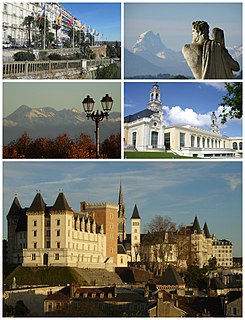
Michel Joseph Callixte Marie Coiffard was one of the leading French flying aces of World War I. He was notable for his success as a balloon buster shooting down enemy observation balloons, which were usually heavily defended by anti-aircraft machine guns and artillery and by fighter planes. He scored 34 victories in his career.
OffizierstellvertreterErich Schütze was a World War I flying ace credited with six aerial victories.
OffizierstellvertreterWilhelm Kühne was a World War I flying ace credited with seven confirmed aerial victories and five unconfirmed ones.
Vizefeldwebel Kurt Ungewitter was a German test pilot for Rumpler Flugzeugwerke and Albatros Flugzeugwerke, aircraft manufacturers in 1913. During World War I, he became a flying ace credited with seven aerial victories. He died in a postwar flying accident on 14 March 1927.
Adjutant-Chef Antoine Laplasse was a World War I balloon buster and flying ace credited with eight aerial victories, six of which were against observation balloons.
Capitaine Mathieu Marie Joseph Antoine Tenant de la Tour was a French World War I flying ace credited with nine aerial victories. He scored one of the first aerial victories over an observation balloon.
Sous Lieutenant Jean Pie Hyacinthe Paul Jerome Casale, was a French World War I flying ace credited with thirteen aerial victories. He was one of the few aces that survived the entire course of fighter aviation in the war.
Lieutenant Colonel Marius Jean Paul Elzeard Ambrogi, using "Marc" as common first name, was a French fighter pilot in both World Wars. He became a flying ace during World War I, with fourteen aerial victories, then added another during World War II. He was one of the leading balloon busters, with 11 observation balloons destroyed to his credit.
Lieutenant Colonel Marcel Anatole Hugues was a French flying ace during World War I. He served before, during, and after the war, as he was a professional soldier. Later, he came out of retirement for World War II service and led Groupe de Chasse II/5 in its opening campaign against the invading Germans.
Major Adrien Louis Jacques Leps was a French World War I flying ace credited with twelve confirmed aerial victories, as well as two probables. He served originally in the cavalry, before shifting to flying. In later years, he served under General Armand Pinsard during World War II.
Adjutant Armond/Armand Jean Berthelot was a French World War I flying ace credited with eleven confirmed aerial victories. He was a scourge to enemy aerial observers, as his victory record contained six observation aircraft and two observation balloons.

Sous Lieutenant Ernest Joseph Jules Maunoury was a French flying ace during World War I. He was credited with eleven confirmed aerial victories. He survived the war, only to die in a flying accident on 21 September 1921.
Adjutant Maurice Bizot was a French World War I flying ace credited with ten confirmed aerial victories.
Adjutant Lucien Marcel Gasser was a French flying ace during World War I. He was a double ace, credited with ten confirmed aerial victories.
Général Auguste Joseph Marie Lahoulle was a French military officer who began his career as a World War I flying ace. He was a double ace during the war, credited with ten confirmed aerial victories.
Sous lieutenant Louis Prosper Gros became a flying ace during World War I, scoring eight confirmed aerial victories, and possibly a ninth. He continued in aviation after the war, and defended his nation again during World War II.
Captain Paul Augustin Edouard Barbreau was an Algerian-born French World War I flying ace credited with eight aerial victories.
LeutnantHermann Habich (1895–?) Iron Cross, Military Karl-Friedrich Merit Order was one of the original pilots in the German Air Service, having earned his brevet two months before World War I began. He is noted for having killed French aviation pioneer Roland Garros. Habich scored seven victories in all, becoming a flying ace.
Sous lieutenant Antoine Cordonnier was a French flying ace during World War I. He was credited with five aerial victories.





